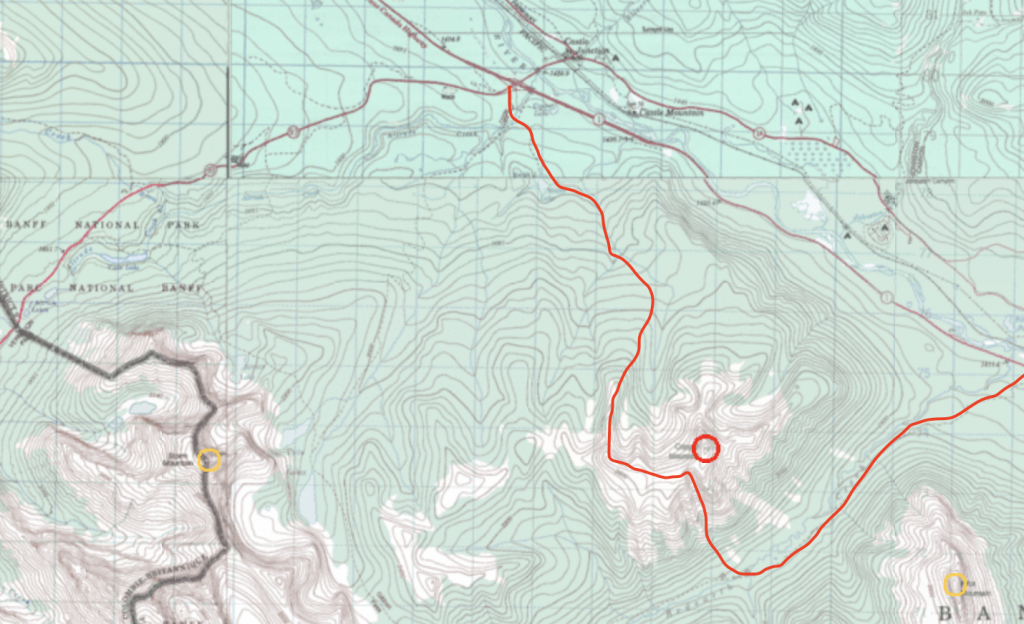

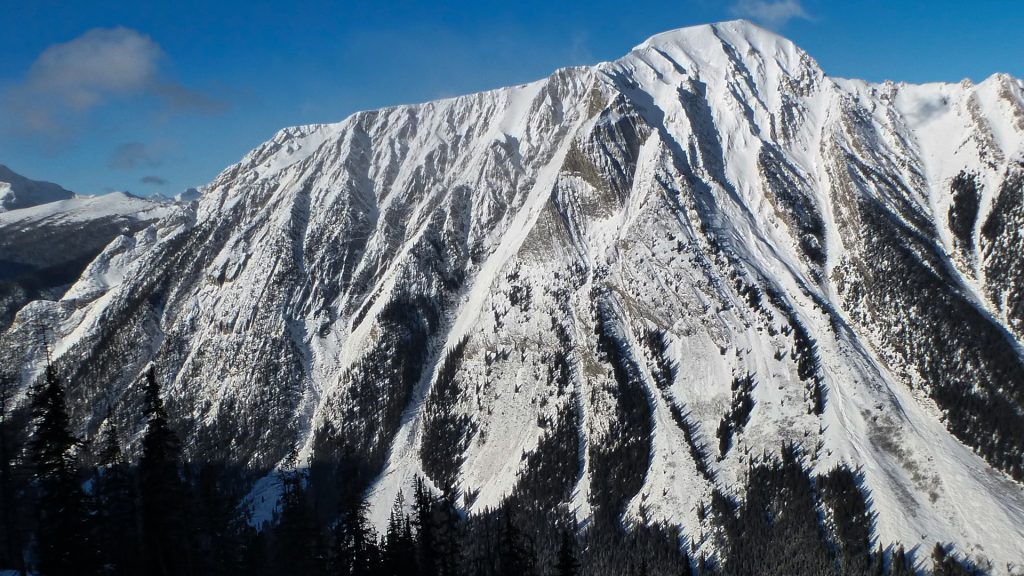
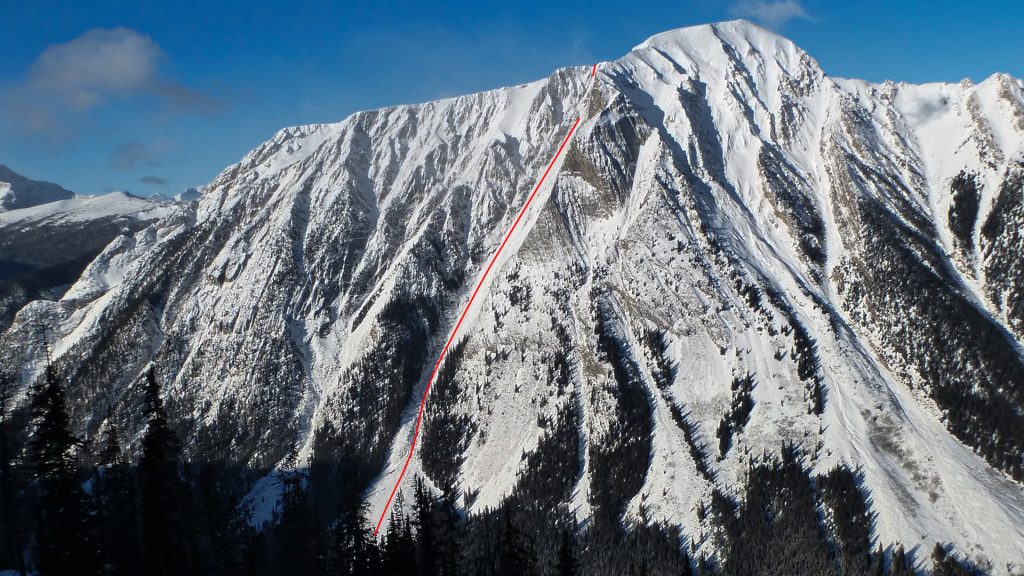 I spent a week in the Canadian Rockies (based out of Lake Louise) while driving back to Alaska after a three month 2019-20 snow season road trip during which I explored the terrain, snowpacks, and avalanche programs of Canada, Montana, Wyoming, and Utah.
I spent a week in the Canadian Rockies (based out of Lake Louise) while driving back to Alaska after a three month 2019-20 snow season road trip during which I explored the terrain, snowpacks, and avalanche programs of Canada, Montana, Wyoming, and Utah.
I skied a lot of great lines in the Alberta Rockies between Banff and Jasper, but the culmination was definitely joining Canadians Marcus Baranow (Confessions of a Ski Bum) and Nick Grant on this Copper Mountain mission to ski the “Mind Shaft” couloir.
The line has been on Marcus’ to-do list for over a decade, but the stars had yet to align. It’s primarily south facing and over 1000m (3300′) long, which makes timing extremely difficult in terms of having acceptable snowpack stability when there is snow top to bottom and for the long approach (that requires elusive snowpack conditions to get through the thick forest). The bottom is relatively low in elevation and the line is obscure, not being visible from civilized areas. It’s a likely first descent.
Read Marcus’ trip report here.
Nick and Marcus put in a lot of work the week before route-finding and breaking trail through the thick and relatively low elevation forest on the north side of Copper Mountain. We mainly followed this route, with some hindsight deviation to make it more efficient, to the base of the north ridge that runs to a subpeak of Copper Mountain. From the end of their pre-established trail, we poked through steep trees into the alpine. I was really hoping the Mind Shaft would go as I did not want to ski this manky, brushy mess back to the highway where we started. Marcus had told me that if we were able to ski the Mind Shaft, we’d be able to exit to Nick’s car via a groomed nordic trail.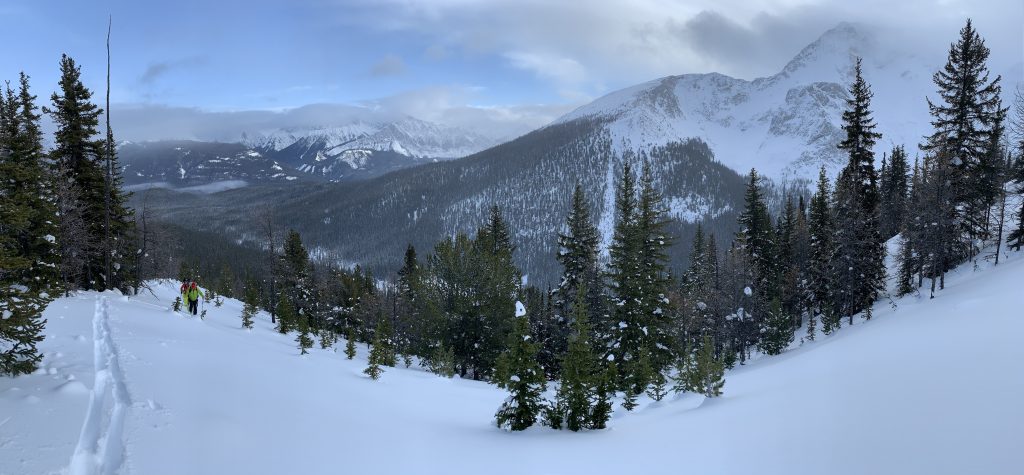
The forested slogging ended and the travel became much more interesting once we reached the alpine.

The first crux of the route was a semi-technical section of the ridge that we had no beta on, other than Marcus’ years of binocular and satellite imagery research. It consisted mostly of crotch deep booting with a bit of easy mixed climbing to avoid tits deep booting up a small slope that could avalanche.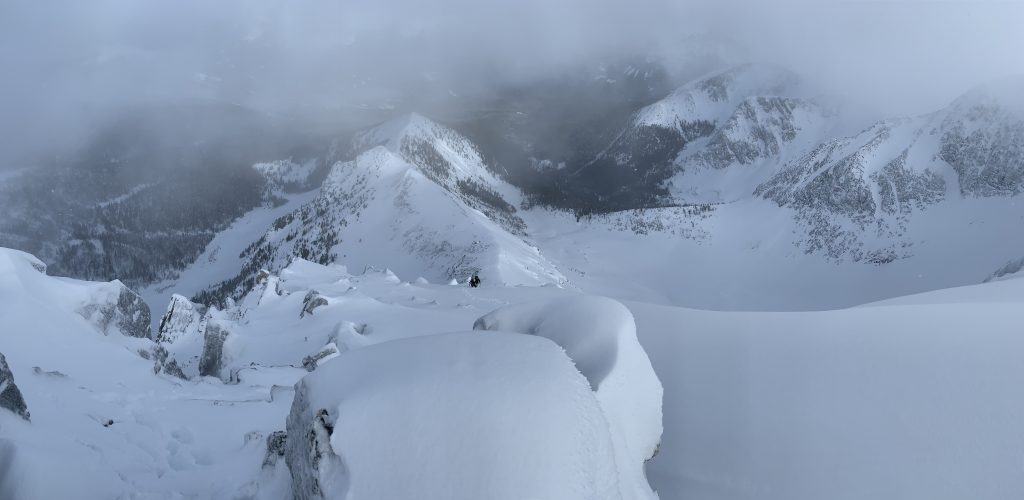
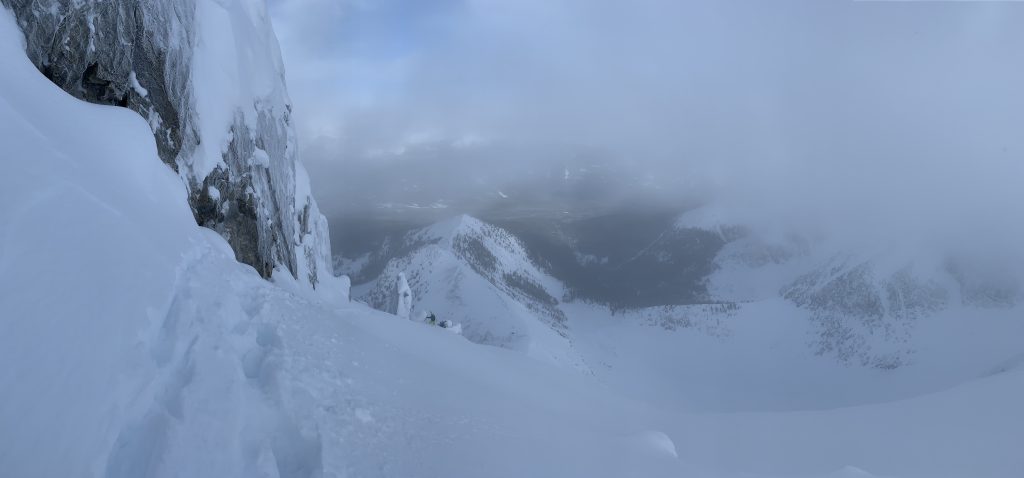
The sketchiest part of the route came after the booting where we transitioned back to skis and skins in order to punch across a short, but unavoidable, avalanche-prone slope with massive exposure.
Minus in-and-out visibility that at times was like being inside a ping pong ball, during which we followed Marcus’ GPS in order to avoid getting to close to cliffs or steep slopes, the travel in the upper alpine became relatively cruiser.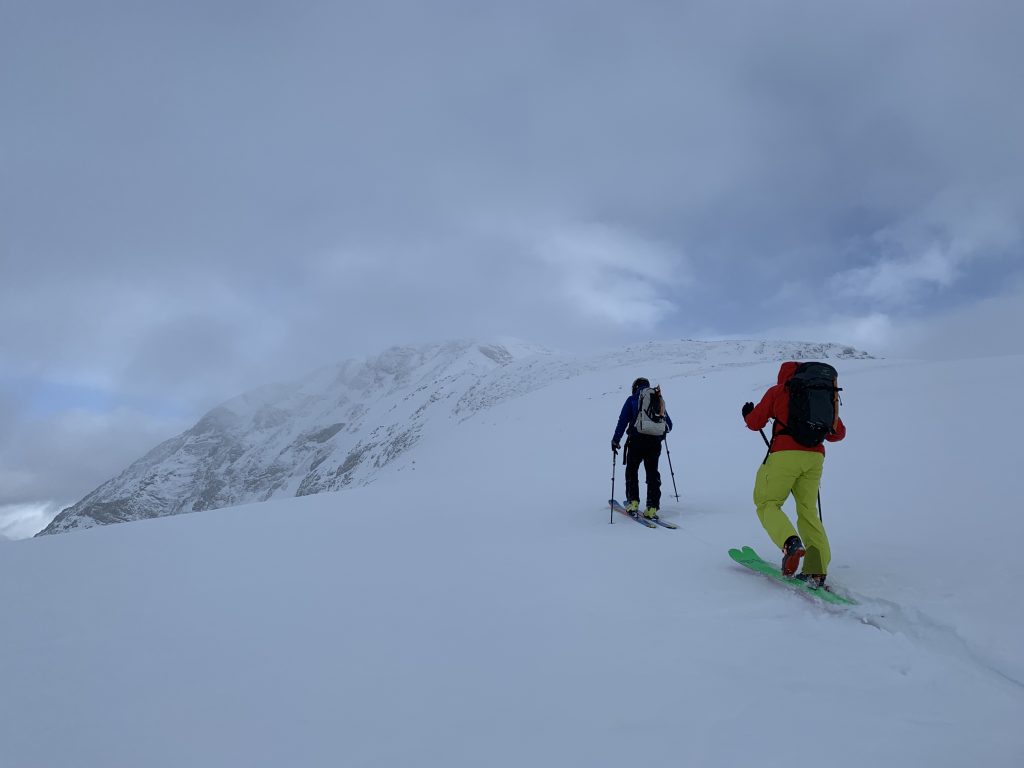
Nearing the Mind Shaft, the bigness of the terrain became obviously spectacular.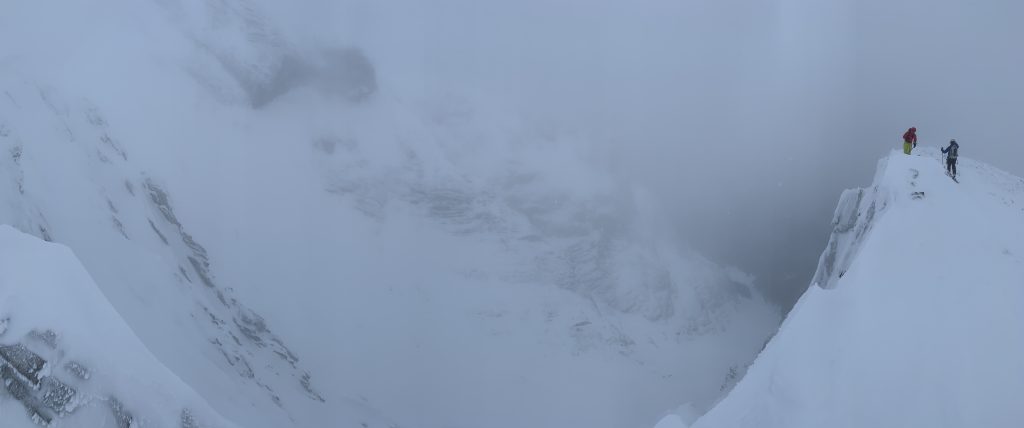
The second crux of the route was decision-making upon our arrival at the Mind Shaft’s entrance. Visibility was an issue, and we struggled to decide how to manage the massive 1000m+ line if we skied it. We also had no intention of skiing the line without avalanche control work, for which I brought my handy “backcountry bomb” cornice cutting tool.
I quickly learned that interior Canadian Rockies cornices behave much differently than the more coastal Alaskan cornices that I have experience with. Marcus warned me about this: that the rocky and faceted “root” of the cornice wouldn’t be prone to easy release on a large scale. We spent about an hour and a half calving off a couple refrigerator to sofa sized cornices. While this cornice dropping project was probably more labor-intensive than any I’d done before, it also produced the biggest avalanche I’ve ever gotten from such a project. The effort was a success as most of the upper Mind Shaft released, and as we began our descent we realized the incredible extent the debris had run (600-700m).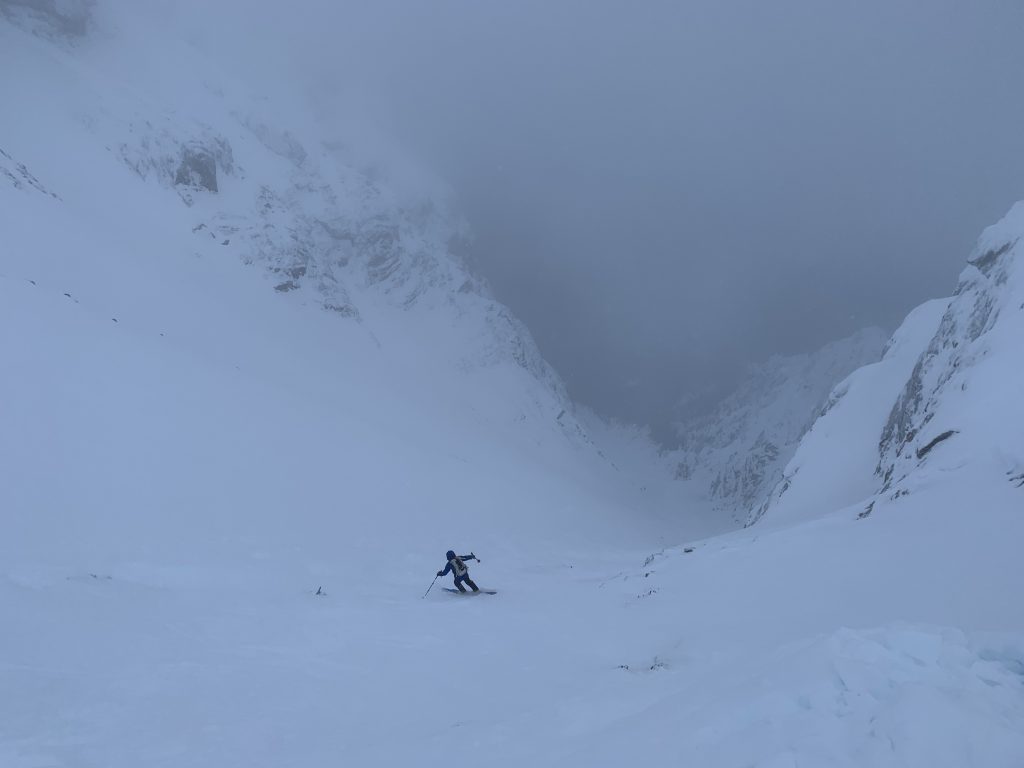
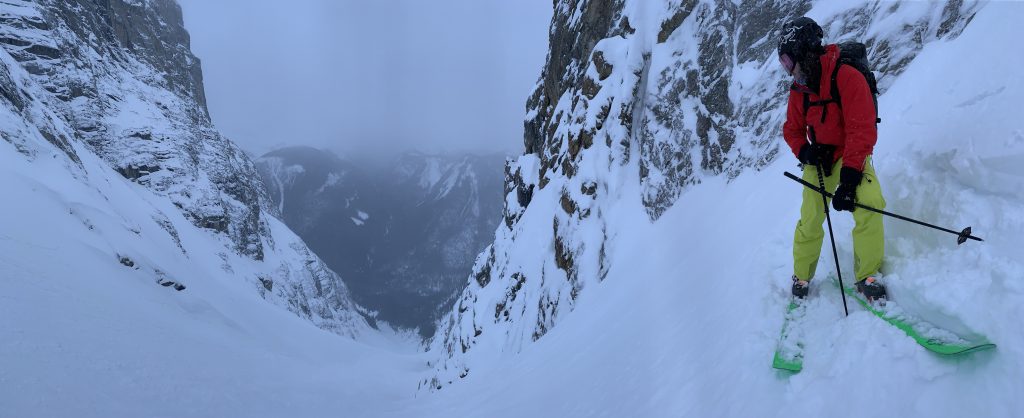
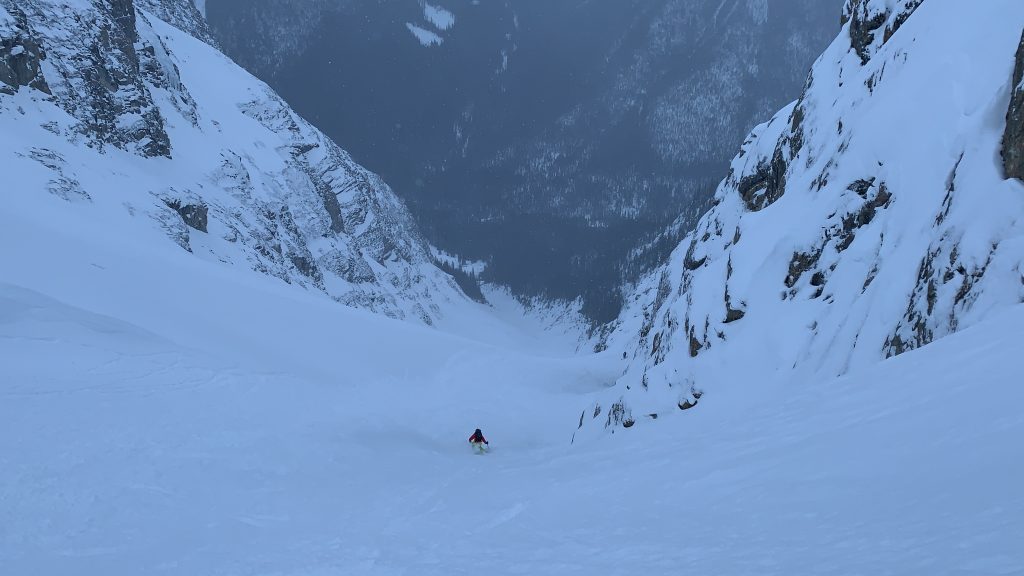
Looking back up at the line from the apron (or fan, as Canadians seem to like to call it), it seemed even bigger from the bottom.

